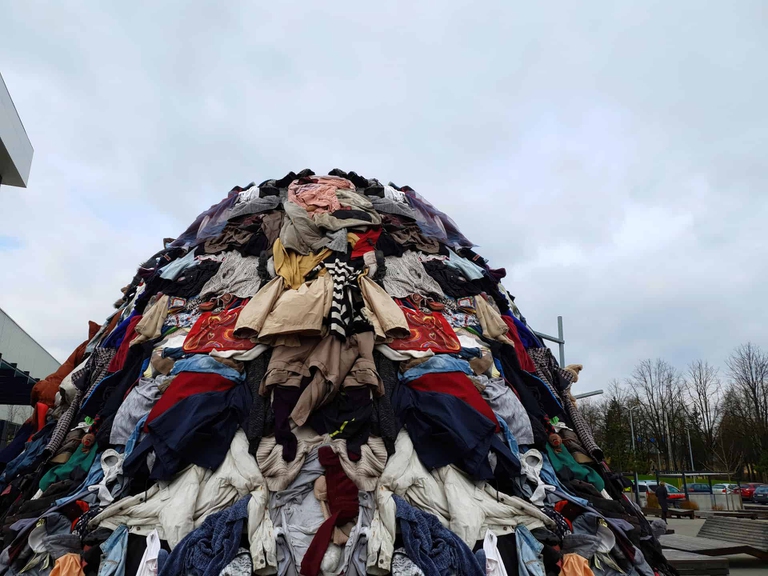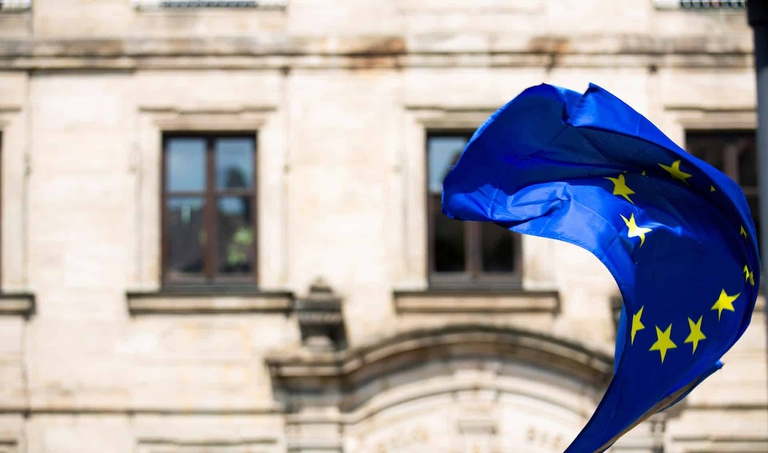https://www.lifegate.it/futuro-moda-ue-emissioni
- |
- Each European citizen annually produces a footprint for his fashion consumption equal to 270 kilograms of CO2 equivalent.
- The European Parliament has updated the report on the impact of textile consumption and, while some states such as France declare open war on fast fashion, concern is growing regarding the results of the elections.
The average consumption of clothing products per person has exploited land for 400 square meters, 9 cubic meters of water And 391 kilograms of raw materials for an equal climate footprint 270 kilograms of CO2 equivalent in 2020 (according to the accounts of the European Environment Agency).This was revealed by the update of the report on the European impact of textile waste.Now, the European Union has equipped itself with tools to deal with the emergency caused by overproduction and overconsumption, and some nations such as France are working to impose an even tighter squeeze, for example on fast fashion consumption, but the question now is:how will the results of the last European elections impact the Union's commitment to a sustainable fashion and more ethical?

Textile production today consumes too many natural resources
Water, land used for growing cotton and other fibres:to produce a single cotton T-shirt, we now know it by heart, or we should know it by heart, we need 2,700 liters of fresh water, a volume equal to that sufficient to quench a person's thirst for two and a half years.In 2020, the textile sector was, at a European level, the third source Of degradation of water resources and land use:in that year, on average nine cubic meters of water, 400 square meters of land and 391 kilograms of raw materials were needed to provide clothes and shoes for every citizen of the European Union.
The problem, however, is complex because these numbers must necessarily be reduced, but the textile and clothing sector means a turnover of 162 billion euros and I work for more 1.5 million people spread across 160 thousand companies (Euratex data, 2021).Also in the year under review, in 27 countries of the Union, were produced 6.9 million tons of textile products finished goods divided between carpets, home textiles and other textiles (including non-woven fabrics, technical and industrial textiles, ropes and fabrics).The products are then added to these imported:8.7 million tons of finished textile products in 2020 alone, with a value of 125 billion euros.Of this total number of imports, clothing accounts for 45 percent in terms of volume, followed by home textiles, other textiles and footwear (Eurostat data) which mainly arrive from China, Bangladesh And Türkiye, while the products we export mostly end up in United Kingdom, Swiss And United States (Euratex data).
Such a vast production does not only translate into physical products which will then need to be disposed of one day, but above all into environmental pollution on a large scale.In fact, it is estimated that textile production is responsible for around 20 percent of global drinking water pollution due to the various processes that the products undergo, such as dyeing and the finish, and that washing synthetic garments releases every year 0.5 million tons of microplastics in the seas.According to calculations in the European Parliament report, a single load of laundry of polyester clothing can result in the release of 700 thousand microplastic fibers that can end up in the food chain.And if we move from the water element to the air element, things don't improve:the fashion industry is responsible for 10 percent of global carbon emissions, more than the total of all international flights and shipping combined.According to the European Environment Agency, purchases of textile products in the EU in 2020 generated around 270 kilos of CO2 per person.This means that textile products consumed in the EU generated greenhouse gas emissions equal to 121 million tonnes.
Ethical and circular fashion:where we are in Europe
Development of new business models for clothing rental, design of products made in such a way as to allow the reuse and the recycling are easier, raising consumer awareness of purchasing fewer and better quality items, fight against greenwashing these are some of the objectives that the European Parliament set itself with the Strategy for sustainable and circular textiles published in March 2022.The strategy in question also includes new design requirements eco-friendly for fabrics, clearer information, a mandatory digital passport for all products and the invitation for companies to take responsibility and act to minimize their CO2 and environmental footprint.Not only:Brussels has a label EU Ecolabel that producers who respect ecological criteria can apply to articles.This gives greater visibility to products that include fewer harmful substances and cause less water and air pollution.
On the subject of waste, however, the European Parliament has presented ideas for change waste regulationstextiles in March 2024.The revision of the Waste Directive will introduce schemes extended producer responsibility:This means that producers of textile products, such as clothing, footwear, hats and accessories, as well as other companies placing such products on the European single market, will have to cover the costs of separate collection, sorting and recycling.Furthermore, EU countries would be obliged to collect textile products separately from 1 January 2025 for reuse, preparation for reuse and recycling.“We are calling for a textile waste reduction target, with oversight of exported used textile products,” he said. Anna Zalewska (from the parliamentary group ECR), the Polish MEP who led to the approval of the rules in Parliament. Zalewska he also called for improving the infrastructure for separate collection of textiles and to make the sorting of municipal waste more efficient, so as to extract the items that can be recycled before being sent to the incinerator or landfill.

European elections and sustainable politics
THE results of the European elections at the beginning of June they marked the end of what was the longest parliament green oriented of the Union.The elections, driven by concerns about climate policies, rising costs of living and immigration, saw an increase in support for the area populist.The shift of the political axis in favor of the sovereign right could complicate the approval of new laws aimed at addressing security challenges, the impacts of global warming or competition from China and the United States.However, an analysis by the news agency Reuters suggests that most existing policies and laws will remain intact and that the main objectives of Brussels on climate change they will not be touched, given that the main parties supporting these policies still hold the majority.However, the new parliament could try to weaken some of the measures Green deal, shifting political attention towards security and industry.
The most significant challenge will probably be ensuring the financing for the ecological transition in a context of slow economic growth and inflation.In the next European Parliament, support for the Green Deal will continue to come from the centre-left Socialists and Democrats group, which emphasizes the social aspects of a just climate transition, and from the liberal Renew Europe group, which emphasizes the need for pragmatic implementation.While the Greens have proposed an even more ambitious investment plan, other left-wing groups are more critical.It is too early to say what effect the elections will have on European commitments towards the Green Deal, we must wait at least for the composition of the new European Commission.We will probably see these issues slide further down the political agenda, but at the moment they do not appear to be major ones dismantling in progress.
